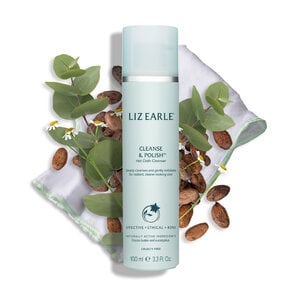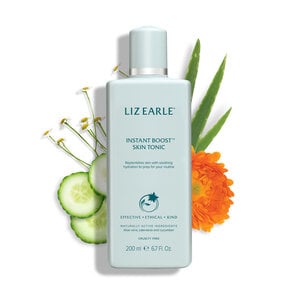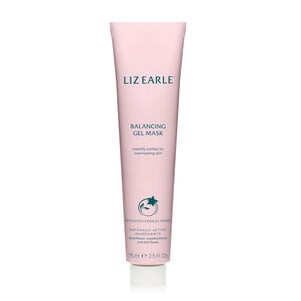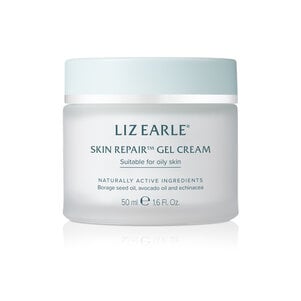
What are facial blemishes?
May 21, 2024
3 min read
Facial blemishes are any type of temporary mark or spot on the skin. There are different types of blemishes, and they can appear anywhere on the body, including the face. While there isn’t anything wrong with blemishes, they can be painful and inconvenient.
Types of facial blemishes
Acne: Acne is a common skin condition characterised by the formation of pimples, blackheads, whiteheads, cysts, or nodules. It occurs when tiny holes in the skin, known as hair follicles, become blocked with dead skin cells and oil, leading to inflammation and bacterial growth.Blackheads: Blackheads, or open comedones, develop when pores are partially clogged by a mixture of sebum – an oily substance in your skin that helps keep it from drying out – and dead skin cells. The dark appearance results from oxidation of the trapped material when exposed to air.
Whiteheads: Whiteheads, or closed comedones, occur when pores are completely obstructed by a build-up of sebum and dead skin cells. Unlike blackheads, whiteheads retain a closed appearance, with the trapped contents remaining underneath the surface of the skin. Pustules and papules: Pustules are small, red bumps with a white top, caused by a build-up of pus. Whereas papules are small, raised bumps that may feel tender or sore but don’t have a white or yellow pus-filled tip. Both are inflammatory types of acne.
Cystic acne: Cystic acne is a severe form of inflammatory acne characterised by large, painful cysts deep underneath the skin. This can result in bacteria, oil and dry skin cells that get trapped in your pores. It often leads to scarring if not properly treated.
Causes of facial blemishes
While most blemishes are harmless, various lifestyle and environmental factors can affect skin health and exacerbate any issues. Understanding these influences can help to reduce the occurrence of blemishes from appearing and help promote healthier-looking skin overall.Hormonal Imbalances: Fluctuations in hormone levels can trigger increased oil production and lead to the development of blemishes. Teenage acne is thought to be triggered by increased levels of testosterone, a hormone which occurs during puberty. Women are more likely to have adult acne than men. It’s thought that most cases of adult acne are caused by changes in hormone levels such as menstruation, pregnancy, or menopause.
Genetics: Some individuals are genetically predisposed to developing acne or other types of facial blemishes. It’s thought that acne could run in families, therefore, if your parents had acne, it’s likely that you’ll also develop it.
Poor skincare habits: Neglecting to cleanse the skin regularly can contribute to clogged pores and blemishes. But don’t overdo it. Using harsh skincare products or excessively scrubbing can irritate your skin.
Diet: Consuming high-glycemic foods such as white bread, breakfast cereals and potatoes may increase the risk of blemishes as it leads to rapid blood sugar spikes, ultimately causing inflammation throughout the body. Dairy products and foods rich in saturated fats can also stimulate the production of sebum, which can exacerbate acne in some individuals.
Stress: While stress doesn’t directly cause acne, studies have shown if you already have acne, stress can make it worse. Stress can stimulate the production of cortisol, a hormone that increases oil production and inflammation in the skin, leading to breakouts.
Sharing make up: While acne isn’t contagious, sharing make up can cause issues to the skin as the oil, dead skin cells and acne-causing bacteria on the shared make up transfers to your face, which can lead to clogged pores and breakouts.
Skin type: Blemishes can happen to anyone at any time, however those with oily and very dry skin types are more prone to breakouts due to imbalanced sebum glands. Skin’s oiliness can change over time and may also be influenced by other factors, such as the natural ageing process, hormones and humidity.


How to help reduce the appearance of blemishes
While there’s no universal solution to reducing the appearance of blemishes, integrating specific habits into your daily routine can contribute to the maintenance of healthier, clearer-looking skin.Maintain a consistent skincare routine: Cleanse skin twice daily with a gentle cleanser to remove dirt, oil and make up. Avoid over washing or using harsh scrubbing techniques, as this can irritate the skin and exacerbate blemishes.
Use non-comedogenic products: Choose skincare and make up products labelled as non-comedogenic, meaning they are formulated not to clog or block pores. This will help reduce the chances of blemishes from appearing as they clean out the excess sebum and dirt that clogs pores.
Avoid touching the face: Every time you touch your face, you’re spreading oil, dirt and bacteria from one part to the other. Refrain from touching your face throughout the day to minimise the transfer from your hands to your skin.
Reduce and manage stress: Trying stress-relieving techniques such as yoga, meditating or reading a book can reduce your body’s inflammatory response to stress, helping to reduce blemishes on the face.
If you suspect you have rosacea or acne, seeking guidance from your GP is essential. They can diagnose you and may refer you to a skin specialist (dermatologist) who can provide you with a personalised treatment plan tailored to your unique condition and symptoms. Medical treatments for skin conditions could include topical or oral medication that may help to reduce redness and inflammation. If rosacea symptoms are affecting your eyes, seek urgent medical advice from your GP or call NHS 111.
A step-by-step routine to help blemish-prone skin

Step 1: Cleanse
Cleansing is an important first step in any routine. They’re great for helping to remove any excess oil on the skin; which clogs pores and can lead to the appearance of blemishes, without stripping the skin of hydration. Try our iconic Cleanse & Polish™ Hot Cloth Cleanser morning and evening to deeply cleanse the skin of any excess oil, SPF and make up, for instant, visible radiance.
Step 2: Tone
Using a toner can help to balance out skin, keeping your skin hydrated and remove any excess oils. Our gentle and non-drying Instant Boost™ Skin Tonic Toner replenishes skin with hydration to prepare it for the next steps in your routine.
Step 3: Target
If your skin is more on the oily side, you might benefit from a product that leaves your skin feeling balanced and reduces excess oil on the skin. For a self-care treat, opt for our Balancing Gel Mask to instantly clarify the skin and refine the look of pores, for a more even and balanced complexion.
Step 4: Moisturise
Moisturisers are an integral part of any skincare routine, helping to lock in moisture and support healthy looking skin. If you have oily skin, you don’t want a moisturiser with a thick formula as this could overwhelm the skin. Choosing a gel formula will keep skin hydrated but contain less oil. Our Skin Repair™ Gel Cream offers up to 72 hours of refreshing hydration in a soothing gel cream texture, leaving skin feeling calm and refreshed.SHOP THE PRODUCTS






